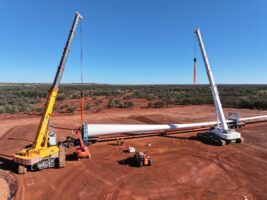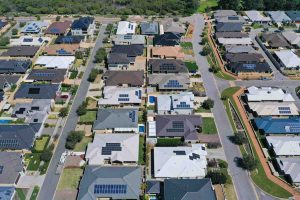New data on the connection of new wind, solar and battery projects in Australia’s main grid reveals a bumper month for connection approvals in the month of December, but the grid is still not transitioning quick enough to meet the federal government’s 82 per cent renewables target for 2030.
In fact, generation data suggests that the growth of renewables has stalled in the last four months.
The Australian Energy Market Operator says in the latest update of its connections scorecard that 19 wind, solar and battery project totalling 4.7 gigawatts had their grid connection applications approved in the month of December alone.
That took the total for the 2023/24 financial year to date to 7.5 GW, from a total of 38 projects – more than the 6.8 GW total for the entire 2022/23 financial year.
That acceleration is welcome – it recognises the massive pipeline of renewable and storage projects, and the eagerness to get on to the grid.
Grid connection approvals reflect the projects that have had their generation performance standards approved, but actual connections and commissioning are still trailing well below the scale needed to more than double Australia’s current share of renewables in just six years.
The AEMO data reveals that just one project, the 30 MW Mannum solar farm in South Australia, achieved registration in the month of December. Registration approval means that the project can begin generation, but no projects reached full output, or commissioning in December.

This graph from the AEMO scorecard reveals the sudden surge in approved applications (on the left), and the lack of growth in registrations and full commissioning (centre and right).
Interestingly, this is being reflected on the main grid, where the annualised totals of renewables have changed little in the past few months – stuck at around 38.6 per cent. That is indication of an unwelcome pause, and the delays in actual delivery.
Data from OpenNEM shows that the 12-month rolling average for the month of October was 38.6 per cent renewables, and that is a figure did not change in November or December. At the time of writing, the month of January was heading for the same result – despite numerous “point in time” production records being set over the period.

This next graph from the AEMO connections report highlights another interesting part of the new energy mix and project development mix, and once which is causing concern in some quarters.
Battery projects dominated the list of grid applications in the last fe months, and come second behind large scale solar in terms of pre-registration. Wind energy trails in third place, a concern for some analysts and policy makers because of their importance in balancing out the heavy lean towards daytime solar.
But this trend also reflects the difficulties that wind projects find in the planning process, and also the reality that solar PV module costs are now at or near record lows, even though the “value” of that solar might have diminished due to the number of negative pricing events during the day. But that also provides an incentive for more storage.










